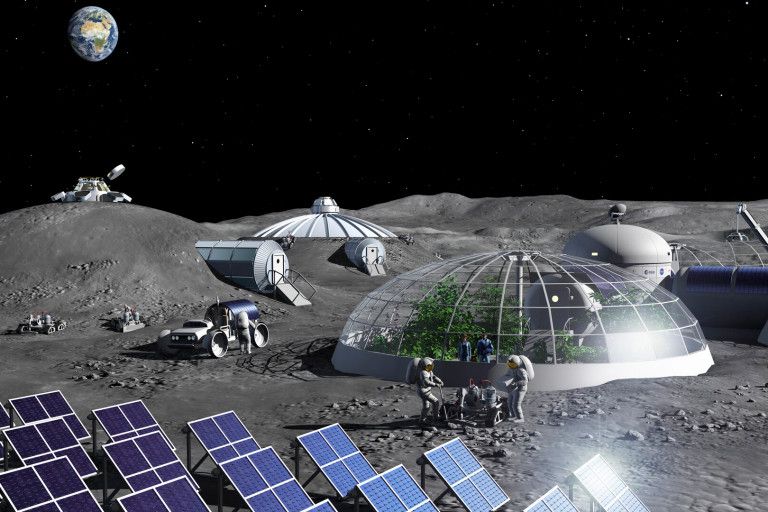Breathing New Life Into Colonizing the Moon? ESA to Produce Oxygen From Lunar Dust
January 20, 2020 (rt.com)
• NASA and the European Space Agency (ESA) are working together towards “a sustained human presence on the Moon and maybe one day Mars.” Toward that end, the ESA has built a prototype oxygen plant in Noordwijk, Netherlands that extracts breathable oxygen from moon rocks, or “lunar regolith”. The space agency’s goal is to create a functional, portable version of the system, ready for testing by the mid-2020s, that could one day be flown to the Moon .
• “Being able to acquire oxygen from resources found on the Moon would obviously be hugely useful for future lunar settlers, both for breathing and in the local production of rocket fuel,” says Beth Lomax of the University of Glasgow, a researcher working on the prototype at the European Space Research and Technology Centre.
• It turns out that lunar regolith (moon rock) is made up of 40 to 45 percent oxygen by weight, making it the Moon’s single most abundant element. Lunar rocks are placed in a metal basket with calcium chloride salt and then heated to 950 degrees Celsius (or 1742 degrees Fahrenheit). Then, by passing an electric current through the heated rock it releases the oxygen contained within.
• With this process, the regolith becomes a usable metal alloy which may also have uses beneficial to a future colony on the Moon, such as raw material for lunar-based 3D printers to construct parts for lunar bases or even spacecraft.

The European Space Agency (ESA) has fired up its prototype oxygen plant to begin producing the element out of

simulated moondust, with a view to creating a sustainable breathable air production facility on the Moon.
“Being able to acquire oxygen from resources found on the Moon would obviously be hugely useful for future lunar settlers, both for breathing and in the local production of rocket fuel,” says Beth Lomax of the University of Glasgow, a researcher working on the prototype at the European Space Research and Technology Centre (ESTEC).
The current prototype is set up in a lab in Noordwijk in the Netherlands, but the next step is to begin fine-tuning, reducing the operating temperature and streamlining the design to create a portable version of the system that could one day be flown to the Moon.
Based on samples brought back from the Moon over the years, it turns out that lunar regolith (moon rock) is made up of 40 to 45 percent oxygen by weight, making it the satellite’s single most abundant element, which is incredibly fortunate for future human colonization plans.
FAIR USE NOTICE: This page contains copyrighted material the use of which has not been specifically authorized by the copyright owner. ExoNews.org distributes this material for the purpose of news reporting, educational research, comment and criticism, constituting Fair Use under 17 U.S.C § 107. Please contact the Editor at ExoNews with any copyright issue.
